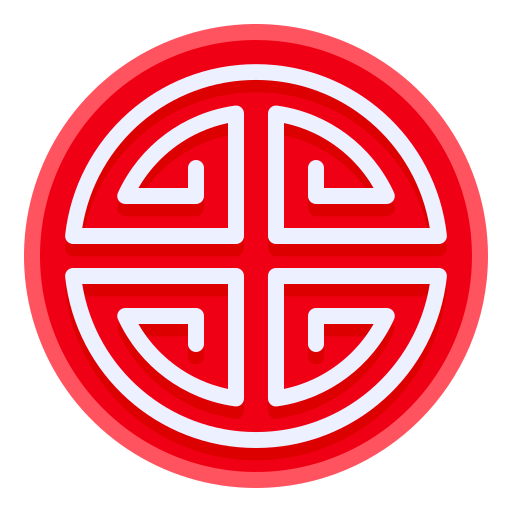Unveiling The Mysteries Of The 1986 Chinese Symbol: A Deep Dive Into Culture And History
Have you ever wondered about the significance of the 1986 Chinese symbol? It’s not just a random mark or character—it’s a window into a rich cultural heritage that spans thousands of years. The 1986 Chinese symbol holds deep meanings that connect us to the past, present, and even the future. From ancient traditions to modern interpretations, this symbol is more than just ink on paper—it’s a story waiting to be told.
When we talk about the 1986 Chinese symbol, we’re diving into a world where every stroke has a purpose and every character tells a tale. Imagine a culture so intricate that even the tiniest detail in a symbol can carry immense weight. This isn’t just about history—it’s about understanding the essence of a civilization that’s shaped the world as we know it today.
So, why does the 1986 Chinese symbol matter? Well, it’s not just about the year 1986. It’s about how this symbol reflects the values, beliefs, and aspirations of a people who have thrived through countless generations. Stick around because we’re about to uncover some pretty cool stuff that’ll make you see this symbol in a whole new light.
Read also:Jonathan Davino Age Unveiling The Life Career And Legacy
What Exactly is the 1986 Chinese Symbol?
Let’s get straight to the point. The 1986 Chinese symbol isn’t just a single character—it’s a representation of the year 1986 in the Chinese calendar. In traditional Chinese culture, each year is associated with a specific zodiac animal and an elemental force. For 1986, the symbol represents the Year of the Tiger under the Fire element. But don’t worry, we’ll break it down for you.
This symbol isn’t just about astrology; it’s also tied to deeper philosophical concepts like yin and yang, balance, and harmony. Think of it as a code that unlocks the mysteries of Chinese cosmology. And trust me, it’s way cooler than it sounds.
Breaking Down the Symbol: A Closer Look
When you see the 1986 Chinese symbol, what you’re looking at is a combination of strokes that represent the Tiger. But here’s the kicker—it’s not just any Tiger. This Tiger embodies qualities like courage, strength, and unpredictability. Combine that with the Fire element, and you’ve got a powerful force that demands respect.
Now, let’s talk about the strokes. Each stroke in the character is intentional. Some represent movement, others symbolize energy, and a few highlight the Tiger’s fierce nature. It’s like reading a map of the soul through art. And if you’re into symbolism, this is gold.
Historical Context: Why the 1986 Chinese Symbol Matters
History has a funny way of repeating itself, and the 1986 Chinese symbol is no exception. In Chinese tradition, the Year of the Tiger is seen as a time of change and transformation. Think of it as nature’s way of shaking things up. But why does this matter in 1986 specifically?
Back in 1986, the world was going through its own set of transformations. From technological advancements to cultural shifts, the energy of the Tiger was definitely present. This symbol serves as a reminder that even in times of chaos, there’s an opportunity for growth.
Read also:Dan Schneider The Mastermind Behind The Amanda Show
Key Events in 1986: The Tiger’s Influence
- 1986 marked the launch of the Hubble Space Telescope, a groundbreaking moment in space exploration.
- It was also the year of the Chernobyl disaster, a tragic event that reshaped global perspectives on nuclear safety.
- Culturally, 1986 saw the rise of iconic figures like Madonna and Michael Jackson, who embodied the fiery spirit of the Tiger.
See the pattern? The Tiger’s influence is everywhere, even if we don’t always realize it.
Cultural Significance: The Tiger in Chinese Mythology
In Chinese mythology, the Tiger is more than just an animal—it’s a deity. Known as the King of Beasts, the Tiger is often depicted as a protector and a guardian. But don’t let the regal image fool you—this creature is also known for its unpredictability and raw power.
Throughout history, the Tiger has been a symbol of strength and leadership. Emperors and warriors alike have drawn inspiration from its qualities. And in the context of the 1986 Chinese symbol, the Tiger represents a call to action—a reminder to embrace your inner power and face challenges head-on.
Myths and Legends: Stories of the Tiger
There are countless stories about the Tiger in Chinese folklore. One of the most famous tales involves a Tiger who protects a village from evil spirits. Another legend tells of a Tiger who sacrifices itself to save humanity. These stories aren’t just entertainment—they’re lessons about courage, sacrifice, and resilience.
When you look at the 1986 Chinese symbol, you’re not just seeing a character—you’re connecting with centuries of storytelling and wisdom.
Modern Interpretations: How the 1986 Symbol Resonates Today
Fast forward to the present day, and the 1986 Chinese symbol still holds relevance. In a world that’s constantly evolving, the qualities represented by the Tiger are more important than ever. Whether it’s in business, relationships, or personal growth, the lessons of the Tiger can guide us through life’s challenges.
For example, in the business world, the Tiger’s energy can inspire innovation and bold decision-making. In relationships, its protective nature can encourage empathy and understanding. And in personal development, the Tiger’s strength can motivate us to push past our limits.
Practical Applications: Using the Tiger’s Energy in Daily Life
- Set ambitious goals and take calculated risks.
- Embrace change and view challenges as opportunities for growth.
- Protect what matters most to you, whether it’s your loved ones or your values.
These are just a few ways the 1986 Chinese symbol can inspire positive change in your life.
Symbolic Meanings: Decoding the 1986 Character
Let’s dive deeper into the symbolic meanings of the 1986 Chinese symbol. Beyond the Tiger and the Fire element, there’s a whole world of interpretations waiting to be explored. Each stroke, each curve, and each line carries a message that can resonate on a personal level.
For instance, the upward stroke might represent ambition, while the downward curve could symbolize humility. The combination of these elements creates a balance that’s essential for personal and spiritual growth.
Exploring the Subtleties: Beyond the Surface
When you study the 1986 Chinese symbol closely, you’ll notice details that might go unnoticed at first glance. These subtleties add layers of meaning that make the symbol even more fascinating. It’s like peeling back the layers of an onion—each layer reveals something new and unexpected.
And that’s the beauty of Chinese symbols. They’re not just static images; they’re living, breathing entities that continue to evolve with time.
Artistic Expressions: The 1986 Symbol in Art and Design
Artists around the world have been inspired by the 1986 Chinese symbol, incorporating it into their work in unique and creative ways. From calligraphy to digital art, the possibilities are endless. But what makes this symbol so appealing to artists?
For one, its complexity allows for endless interpretations. Whether it’s a minimalist design or a detailed masterpiece, the 1986 symbol can adapt to any style. Plus, its cultural significance adds depth and meaning to any piece of art.
Examples of Artistic Interpretations
- Calligraphy artists use the 1986 symbol to create dynamic and fluid pieces that capture the essence of the Tiger.
- Graphic designers incorporate the symbol into logos and branding to convey strength and innovation.
- Traditional painters use the symbol as a focal point in their works, often combining it with other elements of Chinese mythology.
Art has a way of bringing symbols to life, and the 1986 Chinese symbol is no exception.
Personal Reflections: How the Symbol Has Impacted Lives
Let’s talk about the human side of the 1986 Chinese symbol. For many people, this symbol has had a profound impact on their lives. Whether it’s through personal experiences, cultural connections, or spiritual awakenings, the Tiger’s energy has touched countless hearts.
Take, for example, someone born in 1986. This person might resonate deeply with the qualities of the Tiger, finding strength and courage in its presence. Or consider an artist who uses the symbol as a source of inspiration, channeling its energy into their work. These are just a few examples of how the 1986 symbol can leave a lasting impression.
Stories of Transformation: Real-Life Examples
There are countless stories of people who have been transformed by the 1986 Chinese symbol. From overcoming personal challenges to achieving professional success, the Tiger’s influence is evident in many areas of life. And while these stories might vary, they all share a common theme: the power of embracing change.
So, whether you’re looking to reinvent yourself or simply gain a deeper understanding of the world around you, the 1986 symbol can be a guiding force.
Conclusion: Embracing the Power of the 1986 Chinese Symbol
As we’ve explored the mysteries of the 1986 Chinese symbol, one thing becomes clear—it’s more than just a character. It’s a representation of strength, courage, and transformation. Whether you’re drawn to its cultural significance, artistic potential, or personal meaning, the 1986 symbol has something to offer everyone.
So, what’s next? Why not take a moment to reflect on how the qualities of the Tiger resonate with you? Or maybe share this article with a friend who might appreciate the wisdom of the 1986 symbol. Whatever you choose, remember that the power of this symbol lies in its ability to inspire and transform.
Table of Contents
- What Exactly is the 1986 Chinese Symbol?
- Historical Context: Why the 1986 Chinese Symbol Matters
- Cultural Significance: The Tiger in Chinese Mythology
- Modern Interpretations: How the 1986 Symbol Resonates Today
- Symbolic Meanings: Decoding the 1986 Character
- Artistic Expressions: The 1986 Symbol in Art and Design
- Personal Reflections: How the Symbol Has Impacted Lives
- Conclusion: Embracing the Power of the 1986 Chinese Symbol


